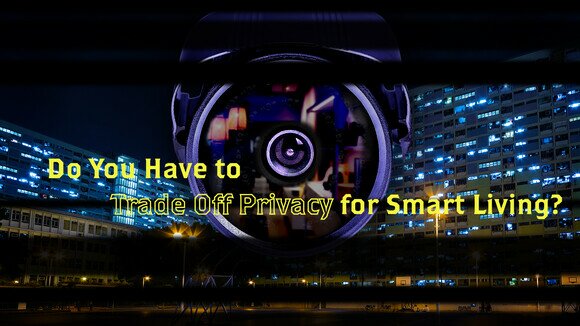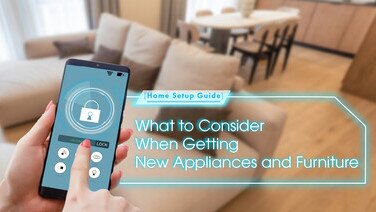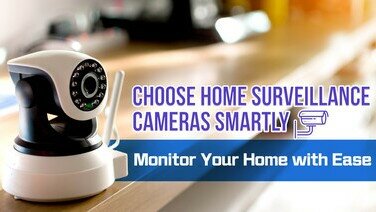Smart homes
The real master of the house is actually... the Internet of Things?
We are all familiar with the ‘Internet’, but what is the ‘Internet of Things’? When devices, equipment or objects are digitized and added with communication functions, data and instructions can be exchanged via the Internet, thus connecting them and forming the Internet of Things (IoT). If you think that the IoT is limited to specific items, then you are wrong! Its application has become wider, allowing people to overcome time and geographic barriers and effectively control every aspect of life. Nowadays, there are even sports shoes that can collect exercise data, garments that monitor physical conditions and children's toys with artificial intelligence – you name it, they can make it smart!
Inadequate security features give rise to privacy risks
Smart devices make the home environment more advanced and automated. Consumers are able to control home appliances from outside via their mobile phones. They can also operate home appliances by voice commands with the help of voice assistants. Whether you are a "busy person" or a "lazy person", you will no doubt fall in love with this kind of comfortable and convenient living. But while enjoying the smart life, consumers must be cautious of the ubiquitous threat of privacy leakage! Special attention should be paid to the lack of security features in some devices. For example, devices that do not require a password or have to be connected to the Internet for login can easily be hacked. Hackers can then access other devices on the same home network and steal personal information, take photos and record audio, etc. The devices may also be ‘hijacked’ and used as the vehicles to launch cyberattacks.
How to securely connect devices to the network?
In order to use a device without any worry, consumers should pay more attention to the following areas before purchasing or using a device that will connect to the Internet. Before making any purchase, the most important thing is to do research. Apart from product information provided by manufacturers, consumers are advised to take a few more steps, such as finding third-party reviews or media reports about the products, and checking the background of the manufacturers, etc. Consumers should not let their guard down even after purchasing the devices! In addition to setting strong passwords, it is also necessary to reset the device regularly to remove spyware, and to update software diligently to enhance security.
Are you thinking about getting some smart home appliances? Before purchasing, you should do some homework on privacy and security by reading the article ‘Use Smart Home Appliances Carefully to Protect Your Privacy’ (Chinese version only) in Issue #509 of CHOICE Magazine.
Home surveillance cameras
Is it true that the camera can be monitored by a third party?
A home surveillance camera is a type of smart devices. Nowadays many families install home surveillance cameras so that they can monitor the activities of children, elderlies and pets from time to time, and may even talk to them remotely. However, there are some hidden security loopholes to watch out for, or otherwise the users may become the subject of surveillance instead!
Many people choose to buy home surveillance cameras from the mainland due to wider choices and more affordable prices. However, a company specialised in network security had published a report earlier, stating that the standard of the industry in the mainland varied significantly, and most of the products did not have adequate security features and therefore were prong to being hacked. If the application software or hardware do not have adequate security features, hackers may easily hack the cameras. Victims may not even notice when their home videos are being broadcasted on the Internet!
To prevent the leakage of privacy, in addition to choosing a reputable brand, consumers should exercise caution at all times. If you want to find out more about ways to keep you worry free, please read the article ‘How to Choose Home Surveillance Cameras? Experts Tell You Ways to Prevent Privacy Leakage’ (Chinese version only) in Issue #485 of CHOICE Magazine.
Attention domestic helpers and employers! Beware of invasion of privacy
When installing home surveillance cameras, in addition to paying attention to your own privacy, you should mind others’ as well! If you have hired a foreign domestic helper, be sure to inform her of the arrangement clearly, so as not to accidentally violate any personal data privacy regulations. In addition to notifying family members, it is also necessary to notify visitors, such as relatives and friends, tutors and onsite maintenance personnel, etc. Consumers should also carefully consider the scope and extent of home surveillance, including whether long-term surveillance is necessary.
Tips on setting up and installation
After purchasing a home surveillance camera, the next step is to set up and install the camera. Before installation, decide whether to use a cloud account / P2P (peer-to-peer) connection or an IP address / DDNS connection. Cloud / P2P connection has the advantage of easy set-up. Users can easily set up the device by following the instructions in the user’s manual, and bypass firewalls or other network settings without the need to change router settings. However, as such connection uses in-house programmes of the manufacturers, it is usually not possible to change to third-party programmes. Even if a programme contains advertisements or does not run smoothly, consumers can only put up with it. Moreover, since the user’s cloud account details such as the login name and password are stored in the manufacturer’s server, and if the server is set up in a region where privacy is not well protected, then attention should be paid on potential privacy leakage! For better protection, be sure to check the background of the manufacturer before purchasing.
As for the IP address / DDNS connection, it is relatively safe and reliable. User can choose a third-party application programme to stream and watch videos captured by the camera, and the connection is also faster. However, during installation, users need to set up port forwarding with the router and connect the camera to the external network, which is quite complicated for ordinary people. If you prefer this type of connection, you may need to seek help from the ‘experts’ who are more familiar with network technology!
Home surveillance cameras come in different styles and have various functions, such as auto tracking, night vision, two-way audio, etc. Before purchasing, you should understand your actual needs in order to choose a suitable model. For a detailed analysis on the pros and cons of different models of home surveillance cameras, you may refer to the article ‘Choose Home Surveillance Cameras Carefully Prices and Image Quality Varied Significantly’ (Chinese version only) in Issue #527 of CHOICE Magazine.
Smart speakers
Change music or pause through a single voice command?
Smart speakers are indispensable items in a smart home setting! A smart speaker is a speaker that can be connected to the Internet and is equipped with voice assistant function. By connecting to the server of a specific service provider and obtaining voice recognition function, the speaker is then able to receive and execute voice commands. In recent years, smart speakers have become more advanced. Via a single voice command, smart speakers can instantly search music, adjust volume, set time control, and stream playlists, etc., making them truly multi-functional and very desirable.
Can people really play music on a smart speaker without moving around physically? In fact, it may not be as convenient as you think. Although many smart speakers can execute voice commands in a quiet environment, they may fail to receive commands properly when there are noises around. So, your smart speakers may ‘ignore’ you when you give voice commands while watching TV, vacuuming, or are around noisy kids.
Risks of being monitored via built-in microphones
Are you concerned about being ‘eavesdropped’ while enjoying the convenience and speed enabled by smart speakers? It is true that built-in microphones in smart speakers will upload the recorded audio to the server. But in theory, only the voice recognition service provider is able to interpret the encrypted audio, and other people can rarely access the conversions. However, whether voice recognition service providers can be trusted is another question. Even if privacy protection policies exist, it is difficult to verify how personal data is actually handled and whether there is any leakage.
Before purchasing smart speakers, apart from considering privacy issues, consumers should also compare prices and functions of different models. Prior to choosing a model of your liking, you may want to read the article ‘Smart Speakers Varied Significantly in Receiving and Executing Commands’ (Chinese version only) in Issue #515 of CHOICE Magazine for an analysis of 10 different models of smart speakers.











